October 12, 2007
Dear Spiritual Family,
Blue Cliff in autumn is very beautiful. Forests are adorned by the ripening leaves. Today, starting at 11 a.m., retreatants from everywhere will come to attend a retreat with the topic Sitting in the Autumn Breeze. A great number of people signed up, but we could not accommodate all of them, so we had to turn down many people. Our monastic brothers and sisters and lay friends feel very bad about this, but there is no other way. This is the first largest retreat in Blue Cliff. Everyone wants to come practice with the Sangha and, at the same time, “check out” the new monastery.
On the afternoon of October 9th 2007, Time Magazine came to interview Thầy about the events that have been taking place in Burma and about the issue on global warming. The interview will be available online. About Burma, Thầy said that the Burmese monks have been courageous in standing up to show the people the way to human rights and democracy. They prove to be worthy spiritual leaders of the country. A country and a nation cannot be without a spiritual dimension.
A human life must also have a spiritual dimension. Without a spiritual dimension, we will not have the capacity to confront suffering, to transform suffering and to offer anything to life. A person without a spiritual path is a person walking in darkness. With a path, we are no longer afraid or worried. The Burmese monks have shown the way to their country and their nation. Even though they face oppression, imprisonment and even death, their minds are at peace, because they have been able to do what they have vowed to do: to provide their country and their nation spiritual leadership. They have fulfilled their responsibility.
Every time people of every social class in Burma think about these monks, they will feel touched: this energy of love and faith that will be their motivating force, nourishing actions that bring human rights and democracy to their country. The world is supporting Burma, just as the world supported the struggle for human rights and freedom of the Buddhist and Vietnamese people in the 1960’s under the Ngo Dinh Diem regime. It was not one Buddhist practitioner who stood up but all Buddhist practitioners stood up together at the same time. Now it is the same thing in Burma. It is not one monk that has stood up, but all the monks have stood up. This is true spiritual leadership.
Thầy also told Time Magazine: All over the world we are also waiting for the spiritual leaders in the United States to stand up to provide that spiritual leadership, in order to end quickly the suffering and loss of lives in Iraq. Spiritual leaders should stand up simultaneously with a clear voice to help wake the people up and show them the way. When the people have a clear vision, and the people have made up their minds, then the government has no choice but to follow. The war in Vietnam ended because of the awakening of the American people at the time.
On October 6th 2007, when we had a day of mindfulness for 1,800 psychotherapists in the University of California in Los Angeles, the monks and nuns of Deer Park and Plum Village put on the Sanghati robes after the Dharma talk, chanted May the Day Be Well and evoked the name of the Bodhisattva Avalokiteshvara to send energy to the monks and lay practitioners in Burma. The governor of California and his wife also came to attend that whole day of mindfulness. Before chanting, the monks and nuns declared that Plum Village and Deer Park communities wanted to express our solidarity with monastic and lay practitioners in Burma. Afterwards, a motion with two points was read out loud to the audience.
The first point is that, we proposed the United Nations to send immediately to Burma a fact finding mission consisting of members of different countries, like the one the U.N. sent to Vietnam in September 1963. The second point is that, we ask the International Olympic Committee to work with China, so that China could put pressure on the Burmese army leaders in the direction of bringing democracy to the country. Everyone participated in the 3-day conference for the psychotherapist in UCLA stood up in that moment to express their support for this motion, including the governor of California. News reporters were present. The conference hall was absolutely quiet, generating a powerful collective energy.
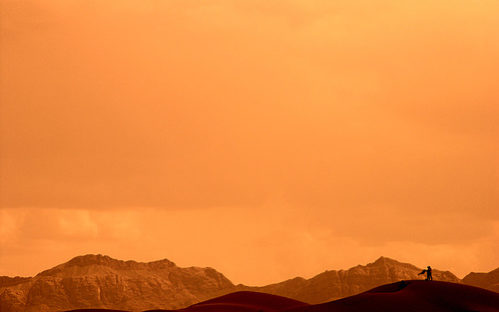
About global warming, Thầy recounted to Time Magazine the story about the couple who ate their son’s flesh – the story told by the Buddha in the Son’s Flesh Sutra. This couple, with their little child, on their way seeking asylum had to cross the desert. Due to a lack of geographical knowledge, they ran out of food, while they were only half way through the desert.
They realized that all three of them would die in the desert, and they had no hope to get to the country on the other end of the desert to seek asylum. Finally, they made the decision to kill their little son. Each day they ate a small morsel of his flesh, in order to have enough energy to move on, and they carried the rest of their son’s flesh on their shoulders, so that it could continue to dry in the sun. Each time when they finished eating a morsel of their son’s flesh, the couple looked at each other and asked: “Where is our beloved child now?” Having told this tragic story, the Buddha looked at the monks and asked: “Do you think that this couple was happy to eat their son’s flesh?” “No, World Honored One. The couple suffered when they had to eat their son’s flesh,” the monks answered. The Buddha taught: “Dear friends, we have to practice eating in such a way that we can retain compassion in our hearts. We have to eat in mindfulness. If not, we may be eating the flesh of our own children.”
UNESCO reported that each day about 40,000 children die because of hunger or lack of nutrition. Meanwhile, corn and wheat are largely grown to feed livestock (cows, pigs, chickens, etc.) or to produce alcohol. Over 80 percent of corn and over 95 percent of oats produced in the United States are for feeding livestock. The world’s cattle alone consume a quantity of food equivalent to the caloric needs of 8.7 billion people, more than the entire human population on earth.
Eating meat and drinking alcohol with mindfulness, we will realize that we are eating the flesh of our own children.
In 2005, the United Nations Food and Agriculture Organization (FAO) began an in-depth assessment of the various significant impacts of the world’s livestock sector on the environment. Its report, titled Livestock’s Long Shadow: Environmental Issues and Options, was released on November 29th 2006. Henning Steinfeld, chief of FAO’s Livestock Information and Policy Branch and senior of the report, in the executive summary, asserts that:
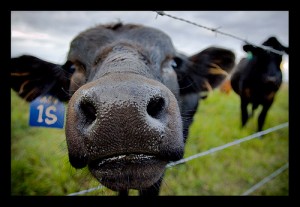
“The livestock sector emerges as one of the top two or three most significant contributors to the most serious environmental problems, at every scale from local to global. The findings of this report suggest that it should be a major policy when dealing with problems of land degradation, climate change, air pollution, water shortage, water pollution and loss of biodiversity. Livestock’s contribution to environmental problems is on a massive scale and its potential contribution to their solution is equally large. The impact is so significant that it needs to be addressed with urgency” H. Steinfeld, et al., “Livestock’s Long Shadow: Environmental Issues and Options,” Livestock, Environmental and Development (2006), page XX
Land degradation:
Presently, livestock production accounts for 70 percent of all agriculture land and 30 percent of the land surface of the planet. Forests are cleared to create new pastures, and it is a major driver of deforestation. For example, in Latin America some 70 percent of former forests in the
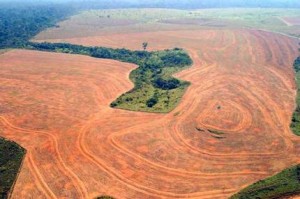
Amazon have been turned over to grazing.H. Steinfeld, et al., “Livestock’s Long Shadow: Environmental Issues and Options,” Livestock, Environmental and Development (2006), page XXI From these figures, we can see that the livestock business has destroyed hundreds of millions acres of forest all over the world to grow crops and to create pastureland for farm animals. Moreover, when the forests are destroyed, enormous amounts of carbon dioxide stored in trees are released into the atmosphere.
Climate change:
The livestock sector has major impacts on the atmosphere and climate. It is responsible for “18 percent of greenhouse gas emissions measured in carbon dioxide equivalent, which is a higher share than transport.” “Rearing Cattle Produces More Greenhouse Gases than Driving Cars, UN Report Warns,” UN News Centre, 29 Nov. 2006.This means that raising animals for food generates more greenhouse gases than all the cars and trucks in the world combined. The livestock sector accounts for 9 percent of anthropogenic carbon dioxide emissions. It also emits 37 percent of anthropogenic methane, most of that from enteric fermentation by ruminants. This is an enormous amount, because every pound of methane is twenty three times as effective as carbon dioxide is at trapping heat in our atmosphere (23 times the global warming potential [GWP] of carbon dioxide). The meat, egg, and dairy industries are also responsible for the emission of 65 percent of anthropogenic nitrous oxide, most of that from manure. Nitrous oxide is about 300 times more potent as a global warming gas than carbon dioxide (296 times the GWP of carbon dioxide). It is also responsible for about two-third (64 percent) of anthropogenic ammonia emissions, which contribute largely to acid rain and acidification of the ecosystem. H. Steinfeld, et al., “Livestock’s Long Shadow: Environmental Issues and Options,” Livestock, Environmental and Development (2006), page XXI
Water scarcity and water pollution:
More than half of all the water consumed in the U.S. is used to raise animals for food. It requires 2,500 gallons of water to produce a pound of meat. Meanwhile, it takes only 25 gallons of water to produce a pound of grain. Livestock in the United States produce an enormous amount of animal excrement, 130 times more than human excrement; each second the animals release 97,000 pounds of feces. “Most of the water used for livestock drinking and servicing returns to the environment in the form of manure and wastewater. Livestock excreta contain a considerable amount of nutrients [nitrogen, phosphorus, potassium], drug residues, heavy metals and pathogens”. H. Steinfeld, et al., “Livestock’s Long Shadow: Environmental Issues and Options,” Livestock, Environmental and Development (2006), page 136 These waste products enter streams and rivers, polluting water sources and causing disease outbreaks that affect all species.
Just as the Buddha cautioned us, we are eating the flesh of our children and grandchildren. We are eating the flesh of our mothers and our fathers. We are eating our own planet earth. The Son’s Flesh Sutra needs to be available for the whole human race to learn and practice.
The U.N.’s recommendation is clear: “The environment impact per unit of livestock production must be cut by half, just to avoid increasing the level of damage beyond its present level,”. H. Steinfeld, et al., “Livestock’s Long Shadow: Environmental Issues and Options,” Livestock, Environmental and Development (2006). page XXWe need to reduce at least 50 percent of the meat industry products, and that means we must consume 50 percent less meat. The U.N. also reports that even if cattle-rearing is reduced by 50 percent, we still need to use new technology to help the rest of cattle-rearing create less pollution, such as choosing animal diets that can reduce enteric fermentation and consequent methane emissions, etc.
Urgent action must be taken at the individual and collective levels. As a spiritual family and a human family, we can all help avert global warming with the practice of mindful eating. Going vegetarian may be the most effective way to fight global warming.
Buddhist practitioners have practiced vegetarianism over the last 2000 years. We are vegetarian with the intention to nourish our compassion towards the animals. Now we also know that we eat vegetarian in order to protect the earth, preventing global warming [climate change] from causing her serious and irreversible damage. In the near future, as global warming [climate change] increases, all species will suffer. Millions of people will die, and sea levels will rise and flood cities and land. Many life-threatening diseases will result, and all species will suffer the consequences.
Both monastic practitioners and lay people practice vegetarianism. Even though the number of lay practitioners who are 100 percent vegetarian is not as many as monastic practitioners, but they practice eating vegetarian meals either for 4 days or 10 days each month.
Thầy believes that it is not so difficult to stop eating meat, when we know that we are saving the planet by doing so.
Lay communities should be courageous and give rise to the commitment to be vegetarian, at least 15 days each month. If we can do that, we will feel a sense of well-being. We will have peace, joy, and happiness right from the moment we make this vow and commitment. During the retreats organized in the United States this year, many American Buddhist practitioners have made the commitment to stop eating meat or to eat 50 percent less meat. This is a result of their awakening, after they have listened to the Dharma talks on the greenhouse effect. Let us take care of our Mother Earth. Let us take care of all species, including our children and grandchildren.
We only need to be vegetarian, and we can already save the earth. Being vegetarian here also means that we do not consume dairy and egg products, because they are products of the meat industry. If we stop consuming, they will stop producing. Only collective awakening can create enough determination for action.
This December 2007, Deer Park will have 100 percent electrical power generated from solar energy for the monastery use. All of our monasteries, in the Plum Village tradition in Europe and North America, have also been practicing no car day once a week, and thousands of our friends are also practicing with us. We have begun to use less cars and to use electric cars and vege-cars (run on vegetable oil). These cars can help reduce 50 percent the amount of carbon dioxide released. Buying a Prius Toyota, which uses half gas and half electricity, we can prevent about 1 ton of carbon dioxide from entering the atmosphere each year.
However, according to the University of Chicago, “being a vegan is more effective in the fight against global warming; a vegan causes approximately 1.5 fewer tons of carbon dioxide from entering the atmosphere each year than a meat-eater does….You could spend more than $20,000 on a Prius and still emit 50 percent more carbon dioxide than you would if you just gave up eating meat and other animal products” (Fight Global Warming by Going Vegetarian). “Fight Global Warming by Going Vegetarian,” article from www.goveg.com.Do you see that, my dear spiritual family? Being vegetarian is already enough to save the world. Who amongst us has not experienced the delicious taste of vegetarian foods? Only when we are too used to eating meat we cannot see this truth.
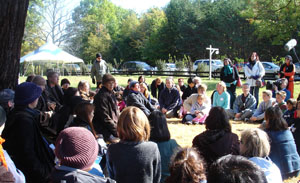
This evening when we begin the retreat, everyone will be informed that we will not use dairy and egg products during the whole retreat. From now on, all of our retreats and, of course, all of our practice centers in Asia, Europe, and North America will be conducted like that. Thầy trusts that lay practitioners will understand and support wholeheartedly. Our present practice is to help everyone become aware of the danger of global warming, in order to help save Mother Earth and all species. We know that if there is no collective awakening, then the earth and all species will not have a chance to be saved. Our daily life has to show that we are awake. Thich Nhat Hanh, Mindfulness in the Marketplace – Compassionate Responses to Consumerism. Parallax Press, Berkely, California (2002).
On October 2nd 2007, at the University of San Diego, Thầy talked about the worry, fear, and despair in relationship to the danger of global warming. The number of people becoming ill due to worry, fear, and despair is increasing each day. They realize that if humans continue to live in ambition, hatred, and ignorance, then the earth and all species will not have an opportunity to escape from this danger. This realization and fear may overwhelm and paralyze many people, and there will be those of us who die from mental illness, before the danger of global warming take place fully. In the Dharma talk, Thầy offered the practice taught by the Buddha: to acknowledge and accept the truth and not run away from it.
The Buddha has taught us to practice looking directly into the seeds of fear in us, instead of trying to cover them up or running away from them. This is the practice of the five remembrances.
1) I will have to grow old.
2) I will have to get sick.
3) I will have to die.
4) One day I will have to lose the things I cherish today, and the people I love today.
5) When my body disintegrates, I cannot bring anything with me except my actions of body, speech and mind – they are the only inheritance that I can bring with me.
When we can practice accepting these truths in this way, we will have peace, and we will have the capacity to live healthy and compassionately – no longer causing suffering to ourselves and to others. When people with cancer or AIDS are first diagnosed and told that they only have 3 months or half a year to live, they often react with anger, denial, and despair in the beginning. They cannot accept it. However, once they can accept the truth, they begin to have peace. When they have peace, they will have the opportunity to practice living “deeply” every moment of their daily lives. As a result, they have the chance to live longer, even 15 years more.
We have the example of sister Dam Nguyen from Hanoi. She came to Plum Village one year with the intention to live with Thầy and the Sangha for a few months, then she would return to Hanoi to die. The doctor told her that she could only live 3-4 more months. When she arrived at Plum Village, sisters suggested that she went to see a doctor, but she refused to. She did not feel the need to see a doctor. She accepted her death, and she lived wholeheartedly every moment she had with the Sangha during those three months. When her visa was about to expire, she bade farewell to the Sangha. An older sister suggested she see a doctor “just to see” what had happened to her cancer. Sister Dam Nguyen agreed, in order to please that sister. The doctor informed her that all the metastatic sites in her body had receded to one place, and that she was doing very well. Our sister went back to Hanoi with great joy. It has been 14 years since she left Plum Village for Hanoi, and she continues to live.
The Buddha taught that all phenomena are impermanent; there is birth, then there is death. Our civilization is also like that. In the history of the earth, many civilizations have ended. If our modern civilization is destroyed, it also follows the law of impermanence. If our human race continues to live in ignorance and in the bottomless pit of greed as at present, then the destruction of this civilization is not very far away. We have to accept this truth, just like we accept our own death. Once we can accept it, we will not react with anger, denial, and despair anymore. We will have peace. Once we have peace, we will know how to live so that the earth has a future; so that we can come together in the spirit of brotherhood and sisterhood and apply the modern technology available to us, in order to save our beloved green planet. If not, we will die from mental anguish, before our civilization actually terminates.
Our mother, The Earth, the green planet has suffered from her children’s violent and ignorant ways of consuming. We have destroyed our Mother Earth like a type of bacterium or virus destroying the human body, because Mother Earth is also a body. Of course, there are bacteria that are beneficial to the human body. Trillions of these bacteria are present in us, especially in our digestive systems (known as intestinal normal flora). They protect the body and help generate enzymes necessary to us. Similarly, the human species can also be a living organism that has the capacity to protect the body of Mother Earth, if the human species wakes up and knows to live with responsibility, compassion and loving kindness. Buddhism came to life, so that we learn to live with responsibility and compassion and loving kindness. We have to see that we inter-are with our Mother Earth, that we live with her and die with her.
Mother Earth has gone through re-birth many times. After the great flood caused by global warming takes place, perhaps only a very small portion of the human race will survive. The earth will need over a million years to recuperate and put on a new whole, beautiful green coat, and another human civilization will begin. That civilization will be the continuation of our civilization. To the human species, one million years is a very long time, but to the earth and in geological time, one million years is nothing at all; it is only a short period of time. Ultimately, all birth and death are only superficial phenomena. No-birth and no-death are the true nature of all things. This is the teaching of the Middle Way in Buddhism. This letter is already long, so Thầy does not wish to expound on this teaching. The retreat has begun, and in another half an hour, Thầy will join the Sangha. Thầy wishes all of you peace and deep practice.
With love and trust,
Thầy
Sources: US Department of Agriculture, Economics Statistic System, “Livestock Slaughter, 2001 Annual Summary“.
__________________________________________
(sources and foot notes are incomplete)


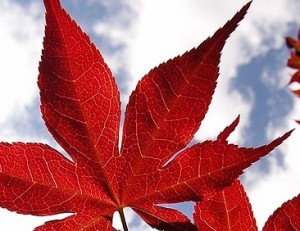
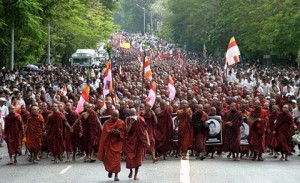
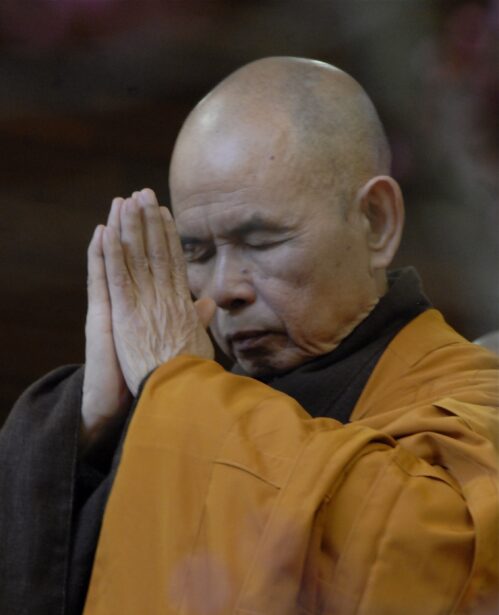
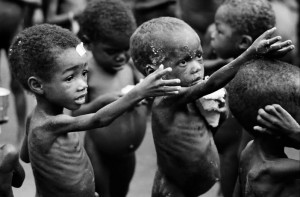

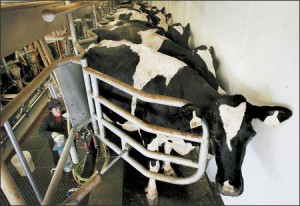
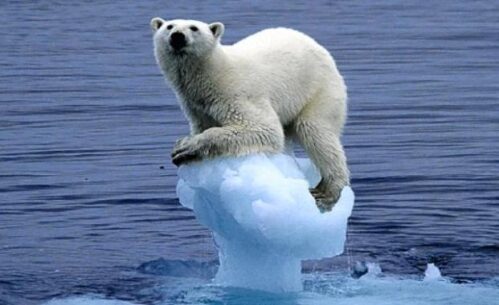
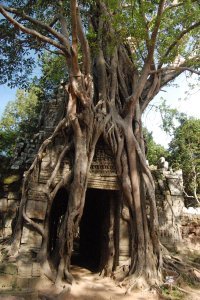
Share Your Reflections